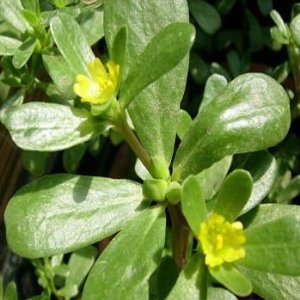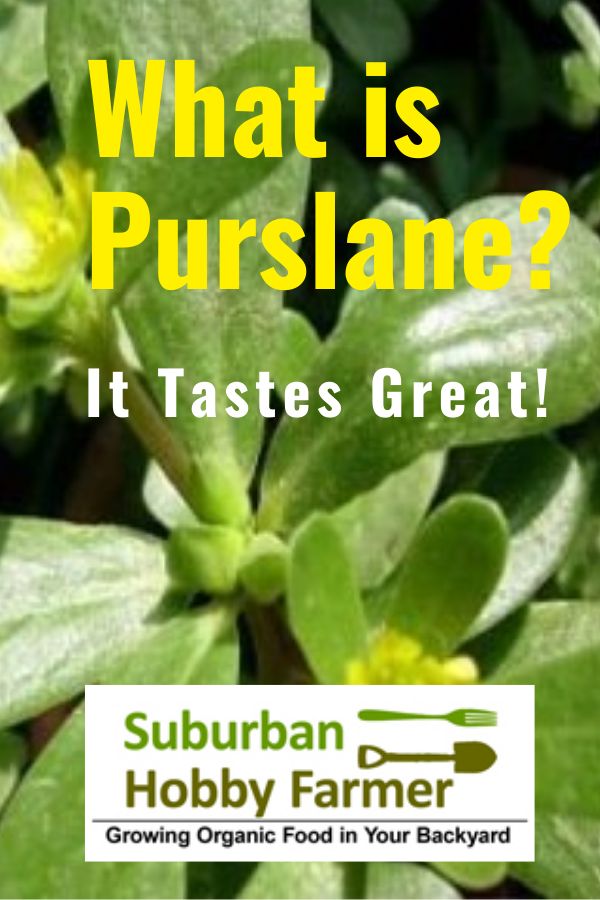Updated: April 8, 2020
I was first introduced to purslane many years ago while watching Jeopardy when Alex Trebek answered the question “What is Purslane?”
I was watching with my in-laws, who are big Jeopardy fans. They knew all about purslane.
My wife’s parents are from France where purslane is known as pourpier, but they live in Florida now. One day, during their stay in New Hampshire, we were making lunch, and they asked if they could add this common weed – uncooked – to the salad.
It was a weed that I had pulled from my garden beds maybe a million times.
Table of Contents
This is a long, detailed article. You can jump to where you want to be by clicking on the different sections below. To come back to this table of contents, just use the back button on your browser.
Let’s take a sec to get the legal words out of the way. This article may contain affiliate links. That means if you click and buy from my partners, I will make a tiny amount of money. This in no way affects my recommendations.
Is purslane in your garden right now?
In many gardens, it’s both a persistent weed and a salad green with very high nutritional value. Originally from India, it’s also commonly eaten throughout Asia and Europe as a lightly steamed side dish.
My in-laws first learned about purslane while living in Europe. After moving to the States, they recognized it growing wild in their garden and have been eating it ever since.
Related: I Shopped for Hoop House Kits. A Review of the Three I Considered.
Lately, more people in North America have also started adding it to their salad because of the health benefits. Experts indicate that purslane is high in omega-3 fatty acids, vitamins C, A and other important nutrients.
It’s also very high in fiber. So much so that I rarely eat it alone. In my opinion, purslane is best as one of many leaves in a mixed salad.
As you know, omega-3s are all the health rage! This is especially true after Paul Greenberg’s book The Omega Principle hit the shelves.
It tastes great!
The really important thing for you to know about this salad green is it tastes great. The purslane variety from my backyard has a fresh flavor with just a hint of lemon.
Plus, it’s kind of fun to think that I’m getting revenge for all the weed-pulling work this weed has caused me by eating it for lunch.
I find it tastes best if you pick it before the little yellow flowers, or even the flower buds, form. I eat the young leaves and the stems. But other people eat the whole plant, including the small, yellow flowers.

Plant taxonomists sometime classify purslane as a pervasive weed. This is because it re-roots from the stem and also re-grows from the roots when cut at ground level.
It requires less water than most leafy greens and is very easy to grow. On my property, it grows almost anywhere I have disturbed the dirt.
Make sure it’s purslane
You might want to grow it from seed before you try and pick it wild from the garden. Why? Because it does kind of look like some of the other weeds in your garden.
You can get purslane seeds online here. The seeds must be very small because I’ve never seen one even though purslane is abundant in my garden. You also can propagate it by planting a cutting. So once you grow it, you can make it spread easily.
Once you get used to the way it looks, it’s pretty easy to identify. I don’t have any trouble picking it out among a bunch of weeds.
Related: Comparing Soil Blocks & Paper Pots for Starting Seeds Indoors.
One downside of purslane is that it doesn’t store very well in the fridge and quickly wilts and develops mold. So, in most cases, you need to eat it right after picking.
Related posts:
- Better Tomatoes with Walls O Water, Water Teepees
- I Tested the Top 4 Seed Starting Mix Products. This is What I Learned
- Is Fermenting Tomato Seeds Necessary?

Suburban Hobby Farmer is a participant in the Amazon Services LLC Associates Program, an affiliate advertising program designed to provide a means for sites to earn advertising fees by advertising and linking to amazon.com.